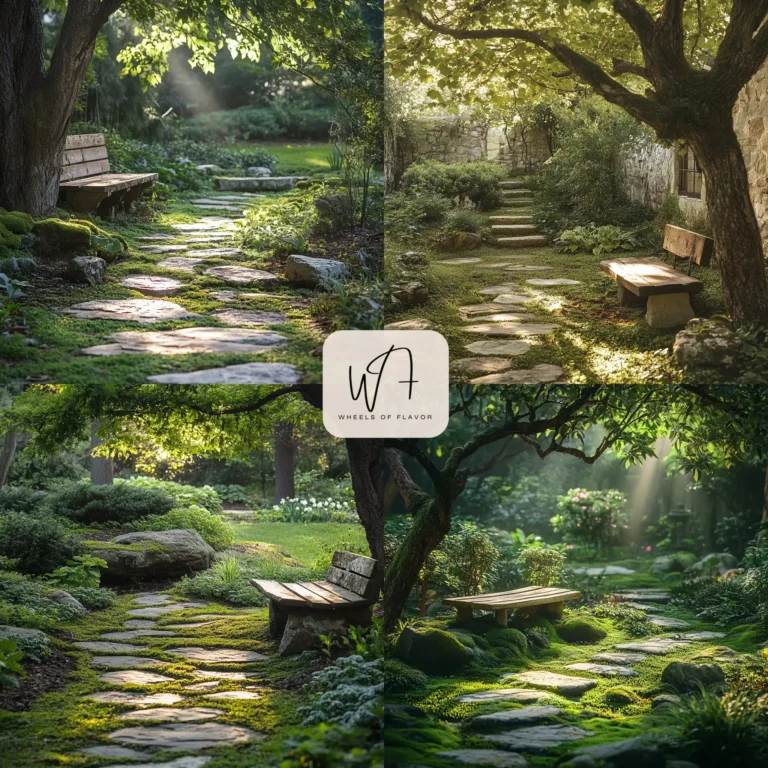A wabi sabi garden embraces the beauty of imperfection, inviting nature’s raw, unpolished charm into your backyard. This Japanese-inspired design philosophy celebrates simplicity, authenticity, and the fleeting beauty of natural elements. If you’re dreaming of a serene outdoor space that feels both timeless and grounded, a wabi sabi garden might be your perfect match. In this article, we’ll explore 17 inspiring ideas to create a wabi sabi garden that transforms your outdoor space into a tranquil retreat.
Table of Contents
What Is a Wabi Sabi Garden?
A wabi sabi garden draws from the Japanese aesthetic of wabi sabi, which finds beauty in the imperfect, impermanent, and incomplete. Unlike manicured lawns or symmetrical flower beds, a wabi sabi garden thrives on weathered textures, organic shapes, and natural materials. Think moss-covered stones, aged wood, and plants that grow freely without rigid structure. It’s about creating a space that feels alive, evolving, and deeply connected to nature.
This approach not only creates a visually stunning garden but also promotes mindfulness and sustainability. By using reclaimed materials and native plants, a wabi sabi garden aligns with eco-friendly practices, making taxis it a great choice for environmentally conscious homeowners.
Why Choose a Wabi Sabi Garden?
The appeal of a wabi sabi garden lies in its authenticity and low-maintenance design. Here are a few reasons why it’s gaining popularity:
- Low Maintenance: Wabi sabi gardens embrace natural growth, reducing the need for constant pruning or upkeep.
- Eco-Friendly: Using native plants and recycled materials minimizes environmental impact.
- Mindful Living: The organic, imperfect aesthetic encourages relaxation and a deeper connection to nature.
- Budget-Friendly: Reclaimed wood, stones, and second-hand decor keep costs down.
For more budget-friendly outdoor decor ideas, check out our DIY Budget-Friendly Decor section for creative inspiration.
17 Wabi Sabi Garden Ideas to Inspire You
1. Incorporate Weathered Wood
Use old wooden benches, driftwood, or reclaimed timber to add rustic charm. A weathered wooden gate or fence can serve as a focal point, blending seamlessly with the natural surroundings.
2. Embrace Moss and Lichen
Moss-covered stones or tree trunks add a soft, aged texture. Encourage moss growth by keeping areas shaded and moist, creating a lush, green carpet.
3. Use Natural Stone Pathways
Create winding pathways with irregular, natural stones. Avoid polished or uniform shapes to maintain the wabi sabi aesthetic.
4. Plant Native Species
Choose native plants that thrive in your region. They require less water and care, aligning with the low-maintenance ethos of a wabi sabi garden.
5. Add a Water Feature
A simple stone basin or a small, bubbling fountain introduces the soothing sound of water. Keep it minimal to avoid overwhelming the space.
6. Celebrate Imperfect Pottery
Incorporate cracked or chipped ceramic pots as planters. These imperfections embody the wabi sabi philosophy and add character.
7. Create a Zen Rock Garden
A small rock garden with raked gravel and a few carefully placed stones can serve as a meditative focal point.
8. Use Bamboo Accents
Bamboo poles or screens add an organic, lightweight element. They’re sustainable and blend beautifully with greenery.
9. Let Plants Grow Freely
Avoid overly trimmed shrubs. Let plants like ferns, grasses, or wildflowers grow naturally for a soft, untamed look.
10. Add Rustic Seating
A weathered wooden bench or a stone seat invites quiet reflection. Place it under a tree or near a water feature for maximum impact.

11. Integrate Reclaimed Materials
Old bricks, rusted metal, or salvaged tiles can be repurposed as garden borders or stepping stones.
12. Highlight Seasonal Changes
Choose plants that showcase the beauty of each season, like cherry blossoms in spring or maples in fall, to emphasize impermanence.
13. Create Shaded Nooks
Use trees or pergolas to create quiet, shaded areas for meditation or reading.
14. Incorporate Handmade Elements
Add handcrafted lanterns or pottery to infuse the garden with a personal touch.
15. Use Soft Lighting
String lights or solar-powered lanterns create a warm, inviting glow without overpowering the natural ambiance.
16. Encourage Wildlife
Install bird feeders or small water sources to attract birds and insects, enhancing the garden’s ecosystem.
17. Keep It Minimal
Avoid clutter. A wabi sabi garden thrives on simplicity, with just a few carefully chosen elements.
For more inspiration on creating sustainable outdoor spaces, visit The Spruce’s guide to eco-friendly gardening.
How to Maintain a Wabi Sabi Garden
Maintaining a wabi sabi garden is refreshingly simple. Focus on these tips:
- Let Nature Lead: Resist the urge to over-prune or control growth. Let plants and materials age naturally.
- Use Organic Fertilizers: Support plant health without synthetic chemicals.
- Regularly Clear Debris: Remove fallen leaves or branches to keep pathways safe, but don’t obsess over tidiness.
- Check Water Features: Ensure fountains or basins are clean and functional.
Benefits of a Wabi Sabi Garden for Your Home
A wabi sabi garden doesn’t just enhance your outdoor space—it elevates your lifestyle. It creates a calming environment that reduces stress and fosters mindfulness. Plus, its eco-friendly design can increase your property’s appeal while keeping maintenance costs low.
FAQs About Wabi Sabi Gardens
What is the main principle of a wabi sabi garden?
The main principle is embracing imperfection and the natural cycle of growth and decay, using organic materials and simple designs to create a serene, authentic space.
How is a wabi sabi garden different from a traditional garden?
Unlike traditional gardens with manicured lawns and symmetry, a wabi sabi garden celebrates natural textures, asymmetry, and weathered elements for a more organic feel.
Can I create a wabi sabi garden on a budget?
Absolutely! Use reclaimed materials, native plants, and second-hand decor to keep costs low. Check out our DIY Budget-Friendly Decor for more tips.
What plants are best for a wabi sabi garden?
Native plants, ferns, mosses, and grasses work well, as they require minimal care and blend naturally with the environment.
How do I start designing a wabi sabi garden?
Begin by observing your space and choosing a few key elements like stones, wood, or water features. Let the design evolve organically over time.
By embracing the wabi sabi garden aesthetic, you’re not just creating a beautiful outdoor space—you’re cultivating a mindset of simplicity, sustainability, and appreciation for nature’s imperfections. Start small, let your garden evolve, and enjoy the journey of creating a space that feels uniquely yours.

